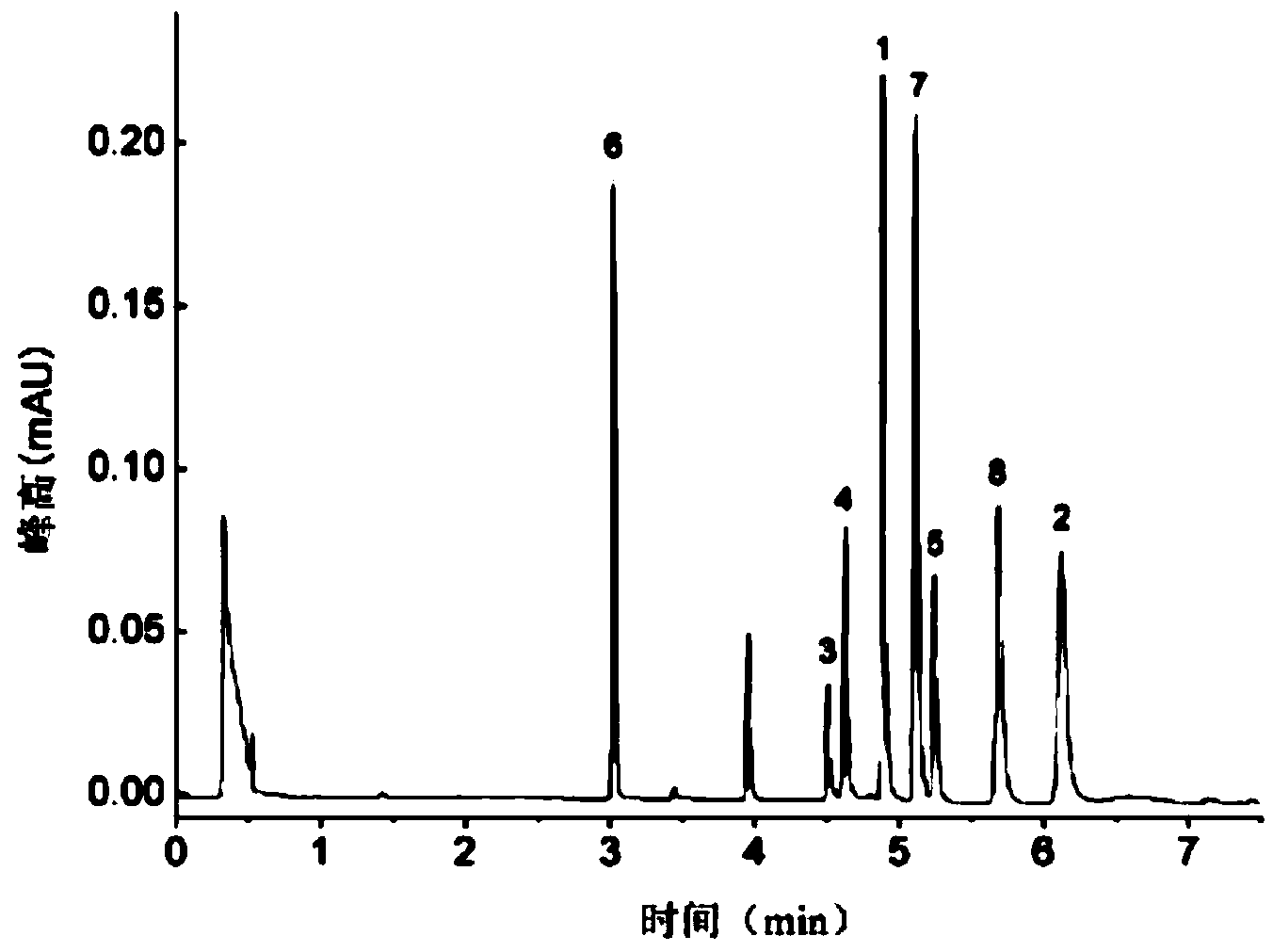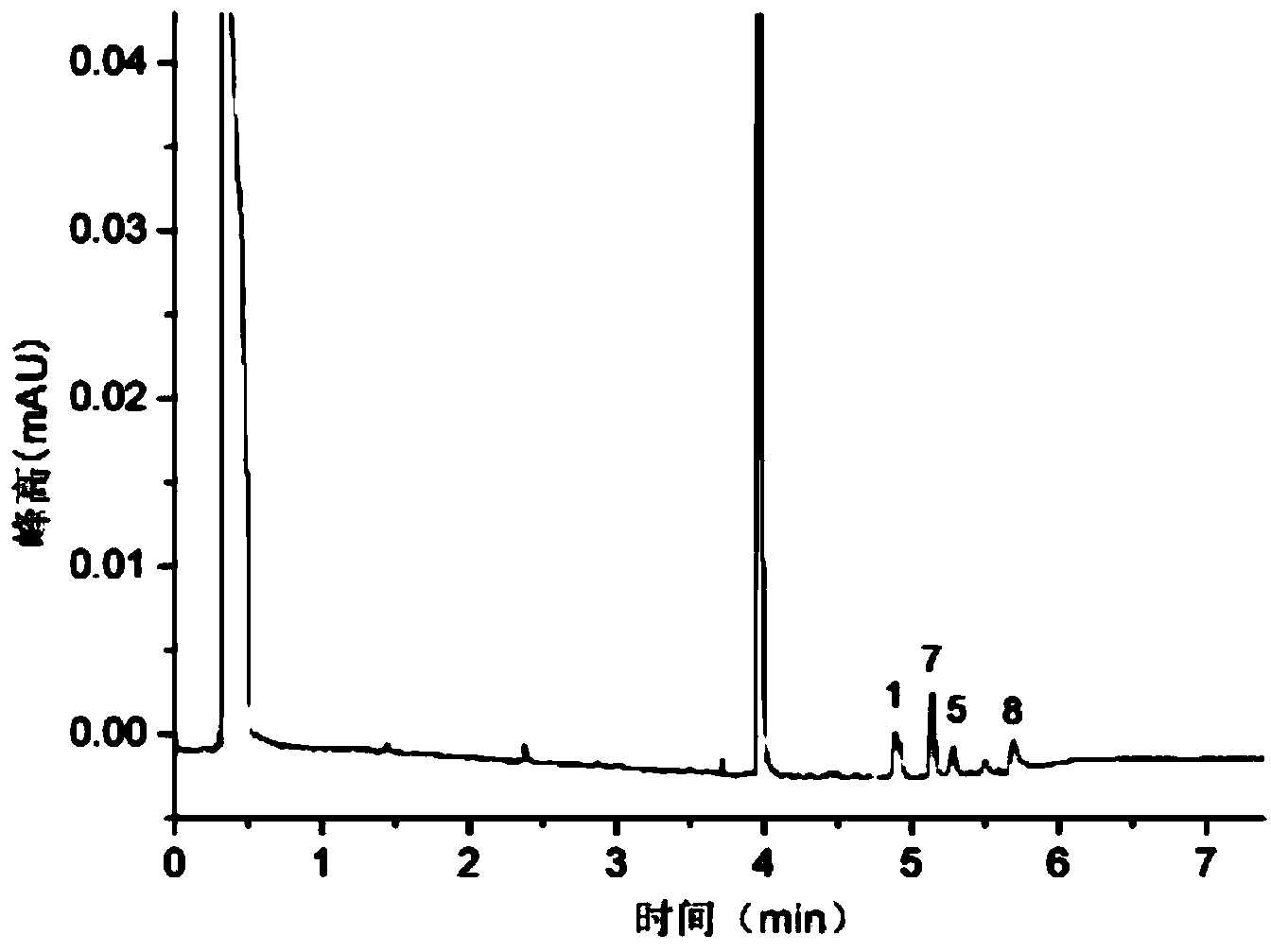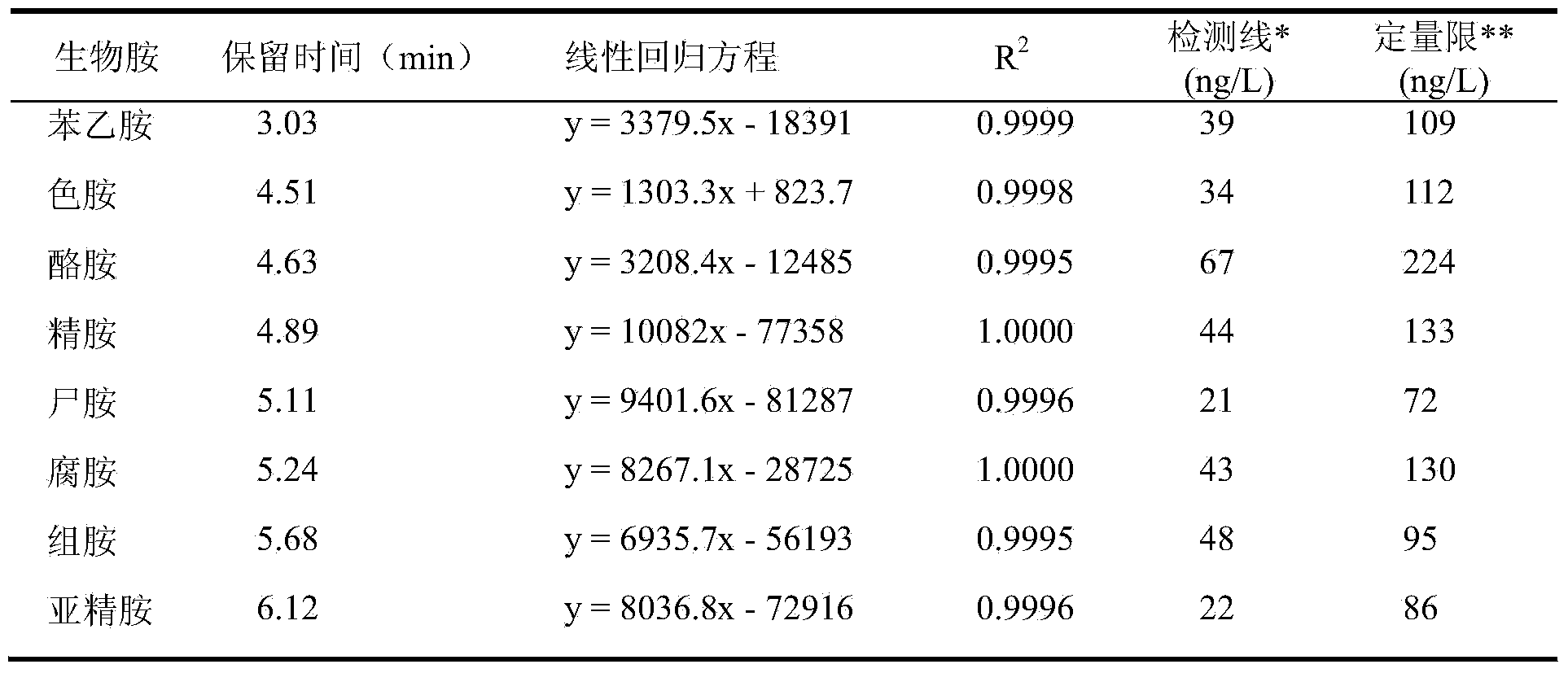Method for determining content of biogenic amines in foods by adopting ultra-efficient bonded phase chromatography
An ultra-efficient phase-convergence and biogenic amine technology, applied in measuring devices, instruments, scientific instruments, etc., can solve the problems of high cost, long analysis time, and large organic solvent load, and achieve low environmental pollution and good mass transfer performance , the effect of less solvent loading
- Summary
- Abstract
- Description
- Claims
- Application Information
AI Technical Summary
Problems solved by technology
Method used
Image
Examples
Embodiment 1
[0049] (a) Sample pretreatment: Accurately weigh 3.0g of the sample to be tested, place it in a 50ml centrifuge tube, add 10ml HClO 4 Solution (0.4mol / L), vortexed for 5min, centrifuged at 3040×g for 10min at 4°C, filtered through filter paper, and collected the supernatant. Precipitate with 10ml HClO 4 (0.4mol / L) solution was repeatedly extracted once, and the supernatant was combined.
[0050] (b) Purification treatment: Take the supernatant of the above sample, add an equal volume of n-hexane solution, vortex for 5 minutes, discard the upper organic phase, and collect the HClO-containing 4 part, repeated twice, transferred to a 25ml brown volumetric flask, and filled with 0.4mol / L HClO 4 The solution is brought up to volume.
[0051] (c) Pre-column derivatization: Take 1.0ml of the purified extract, 200μl of 2mol / L sodium hydroxide solution, 300μl of saturated sodium bicarbonate solution and 1ml of acetone solution of 10mg / ml dansyl chloride. ℃, protected from light for...
Embodiment 2
[0056] (a) Sample pretreatment: Accurately weigh 4.5g of the sample to be tested, place it in a 50ml centrifuge tube, add 20ml HClO 4 Solution (0.4mol / L), vortexed for 7min, centrifuged at 3040×g for 10min at 4°C, filtered through filter paper, and collected the supernatant.
[0057] (b) Purification treatment: take the supernatant, add an equal volume of n-hexane solution, vortex for 3 minutes, discard the upper organic phase, and collect the HClO-containing 4 part, transferred to a 25ml brown volumetric flask, with 0.4mol / L HClO 4 The solution is brought up to volume.
[0058] (c) Pre-column derivatization: take 1.0ml of the purified extract, 200μl of 2mol / L sodium hydroxide solution, 300μl of saturated sodium bicarbonate solution and 1ml of 10mg / ml dansyl chloride acetone solution, shake and mix well, and place at 40 ℃, protected from light for 45 minutes, shaking once every 9 minutes; adding 100 μl of ammonia water to terminate the reaction, standing in the dark at room ...
Embodiment 3
[0063] (a) Sample pretreatment: Accurately weigh 6.0g of the sample to be tested, place it in a 50ml centrifuge tube, add 10ml HClO 4 Solution (0.4mol / L), vortexed for 10min, centrifuged at 3040×g for 10min at 4°C, filtered through filter paper, and collected the supernatant. Precipitate with 10ml HClO 4 (0.4mol / L) solution was repeatedly extracted once, and the supernatant was combined.
[0064] (b) Purification treatment: Take the supernatant of the above sample, add an equal volume of n-hexane solution, vortex for 8 minutes, discard the upper organic phase, and collect the HClO-containing 4 part, repeated twice, transferred to a 25ml brown volumetric flask, and filled with 0.4mol / L HClO 4 The solution is brought up to volume.
[0065] (c) Pre-column derivatization: take 1.0ml of the purified extract, 200μl of 2mol / L sodium hydroxide solution, 300μl of saturated sodium bicarbonate solution and 1ml of 10mg / ml dansyl chloride acetone solution, shake and mix well, and place ...
PUM
| Property | Measurement | Unit |
|---|---|---|
| diameter | aaaaa | aaaaa |
| length | aaaaa | aaaaa |
| particle diameter | aaaaa | aaaaa |
Abstract
Description
Claims
Application Information
 Login to View More
Login to View More - R&D
- Intellectual Property
- Life Sciences
- Materials
- Tech Scout
- Unparalleled Data Quality
- Higher Quality Content
- 60% Fewer Hallucinations
Browse by: Latest US Patents, China's latest patents, Technical Efficacy Thesaurus, Application Domain, Technology Topic, Popular Technical Reports.
© 2025 PatSnap. All rights reserved.Legal|Privacy policy|Modern Slavery Act Transparency Statement|Sitemap|About US| Contact US: help@patsnap.com



